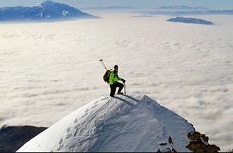Breckenridge is host to world-class ski resorts that can be enjoyed by all. In order to understand the risks associated with altitude sickness in Breckenridge and minimize them, read on…
Altitude sickness is a common complaint among individuals who are not accustomed to the conditions that are found at Breckenridge. Breckenridge altitude sickness prevention and treatment are simple and people can avoid the nausea, headaches and other symptoms associated with altitude sickness by understanding the atmospheric conditions that cause the symptoms and taking appropriate countermeasures.
Breckenridge Altitude Symptoms
Most people do not exhibit any symptoms of altitude sickness at altitudes below 8,000 ft. At 9600 ft, mild altitude sickness symptoms include nausea and dizziness, headache, fatigue, loss of appetite, disturbed sleep and shortness of breath. Moderate symptoms include severe headache which is not relieved by medication, nausea with vomiting, and decreased co-ordination. Severe altitude sickness usually does not occur at altitudes of less than 10,000 feet and the symptoms are similar to moderate symptoms but also include fluid build up in the lungs, mental confusion and inability to walk.
Who Is Susceptible to Altitude Sickness?
Not all individuals suffer from symptoms of altitude sickness, but about 75% of individuals do exhibit some symptoms at altitudes of over 10,000 ft. There is no way to determine who will suffer from altitude sickness since there is no correlation with age, gender or physical condition. A person is either susceptible or they are not. Altitude sickness can be avoided by staying for 2 or 3 days at progressively higher altitudes so the body becomes acclimated to the conditions.
Breckenridge Altitude Tips
At 9600 ft, the atmosphere is much thinner and more arid than at sea level. One way to prevent Breckenridge altitude sickness is to drink plenty of water both before arriving at the location and during the entire stay. Plain water is the best remedy for dehydration since other drinks may contain sodium and other additives that can reduce their effectiveness in hydrating the body. The temperature may not be hot, but the humidity is the same as conditions found in deserts.
Reduce Physical Activity
Because the air at high altitudes is thinner than at sea level it contains less oxygen. Physical exercise at the high Breckenridge altitude requires more effort since the body has to work harder just to stay oxygenated. A one mile walk at 9600 ft requires the same effort as a three mile walk at sea level so new comers and visitors to the area should reduce their physical activity until they become acclimated to the conditions.
Breckenridge Altitude Sickness Advice
Most people can avoid altitude sickness by staying several days in Denver or another area with altitudes that are a bit lower than that of Breckenridge. Ideally, moving up 2000 ft every two days gives the body time to get used to the conditions at high altitudes. People who have never been sick at high altitudes or who frequent areas with high altitudes are unlikely to suffer from symptoms and do not need to take preventative measures.
Breckenridge altitude sickness prevention measures can help people who are sensitive to high altitudes avoid unpleasant symptoms. Drinking lots of water and cutting back on physical activity can help counteract some of the symptoms. Sleep disturbances, caused by irregular breathing patterns that can occur at high altitudes, can be treated with acetazolamide which will minimize fatigue. The best way to get the most out of a Breckenridge vacation is to understand how to prevent the symptoms of altitude sickness.





